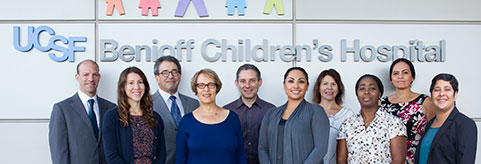Neurofibromatosis
Neurofibromatosis 1 (NF1) is a genetic condition characterized by developmental changes in the nervous system, muscles, bones and skin. It causes neurofibromas, or tumors, that form and grow on nerves. The tumors produce other abnormalities, such as skin changes and bone deformities.
The condition is quite variable, and can range from mild to severe. At least half of all children with NF1 have learning disabilities.
About half of all NF1 patients inherit the condition from an affected parent and half have a new, spontaneous genetic mutation that causes the condition.
Physical signs of neurofibromatosis include:
- Multiple dark spots on the skin ("café au lait" spots)
- Freckling in the armpits and inguinal regions (the sides of the lower abdomen)
- Neurofibromas, or tumors
- Spots on the iris of the eye, called Lisch nodules
Less common but potentially more serious symptoms include optic nerve and other central nervous system tumors, malignant peripheral nerve tumors, scoliosis, bone problems and blood vessel abnormalities.
NF1 is usually diagnosed based on an examination by a medical geneticist — a doctor specializing in genetic conditions — or by a pediatrician. Genetic testing for the mutations that cause the condition is available, but isn't necessary for diagnosis.
There is no cure for neurofibromatosis — the primary goal of treatment is to relieve symptoms. Painful tumors on or under the skin, or on visible areas of the body, may be removed surgically. Surgery also may be performed to remove tumors that are affecting function by pressing on the nerves or other vital parts of the body.
Because this birth defect has a genetic link, families may be referred to the General Genetics Clinic for counseling.


